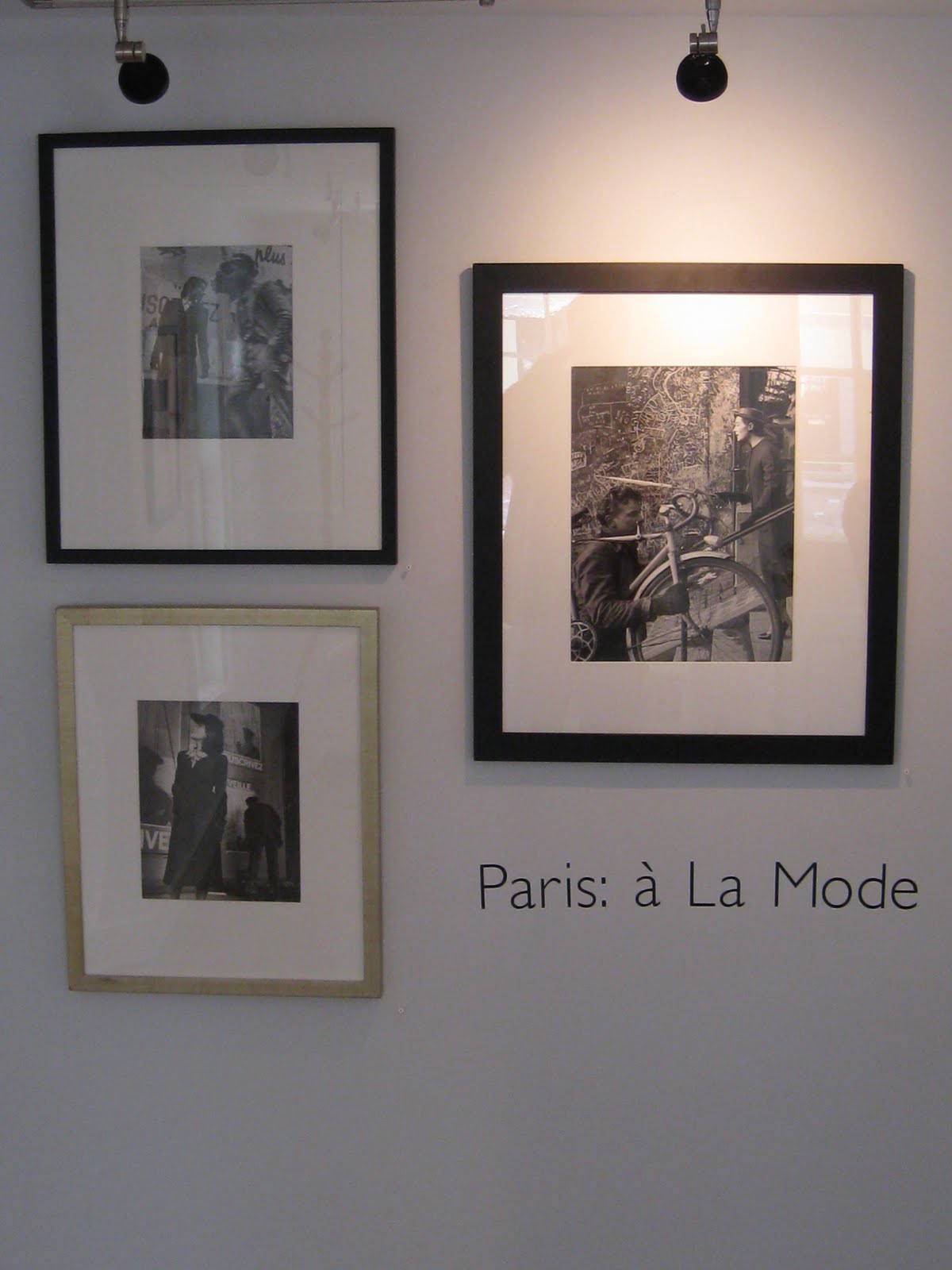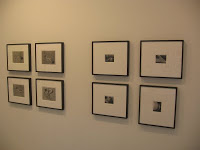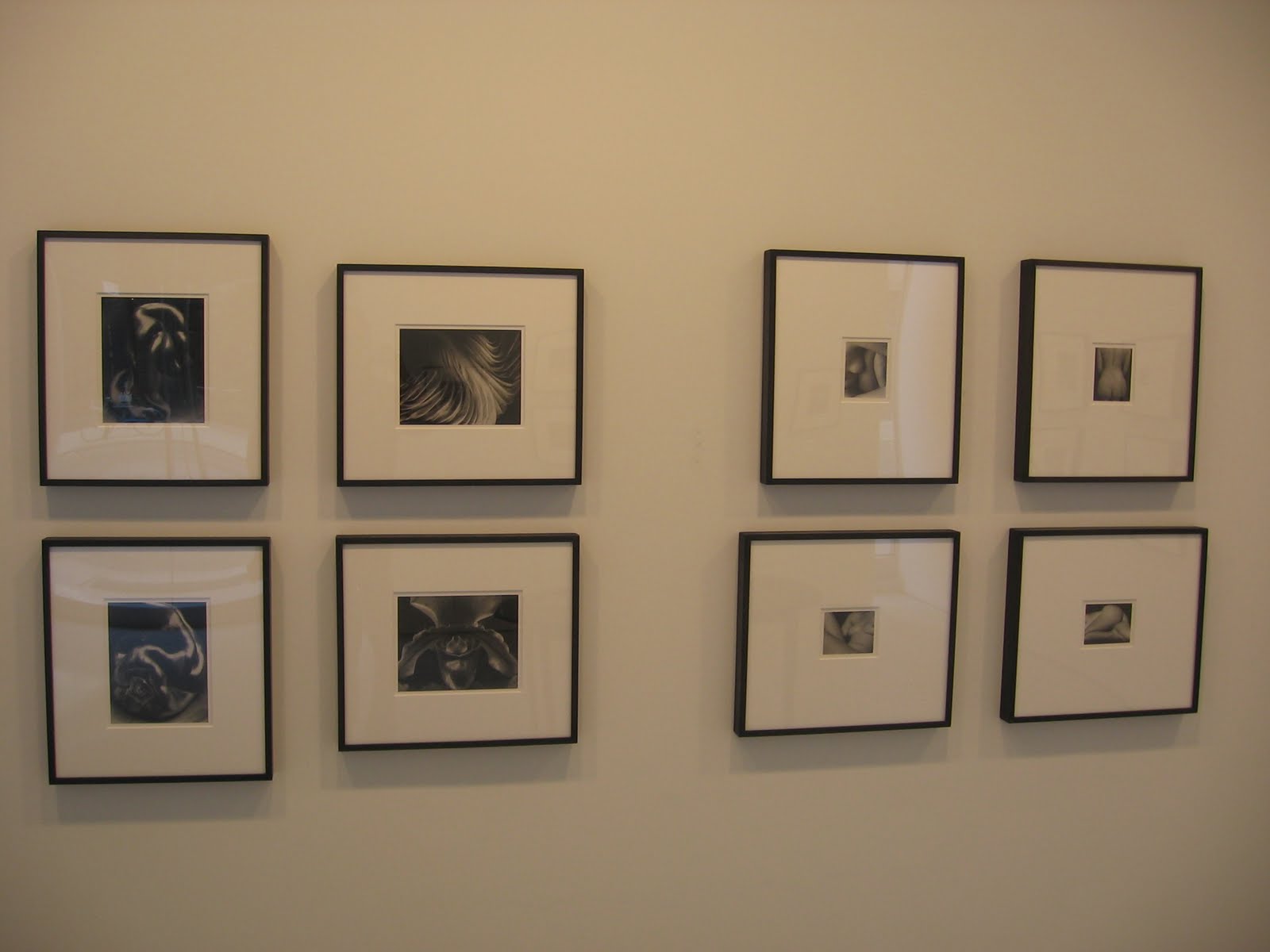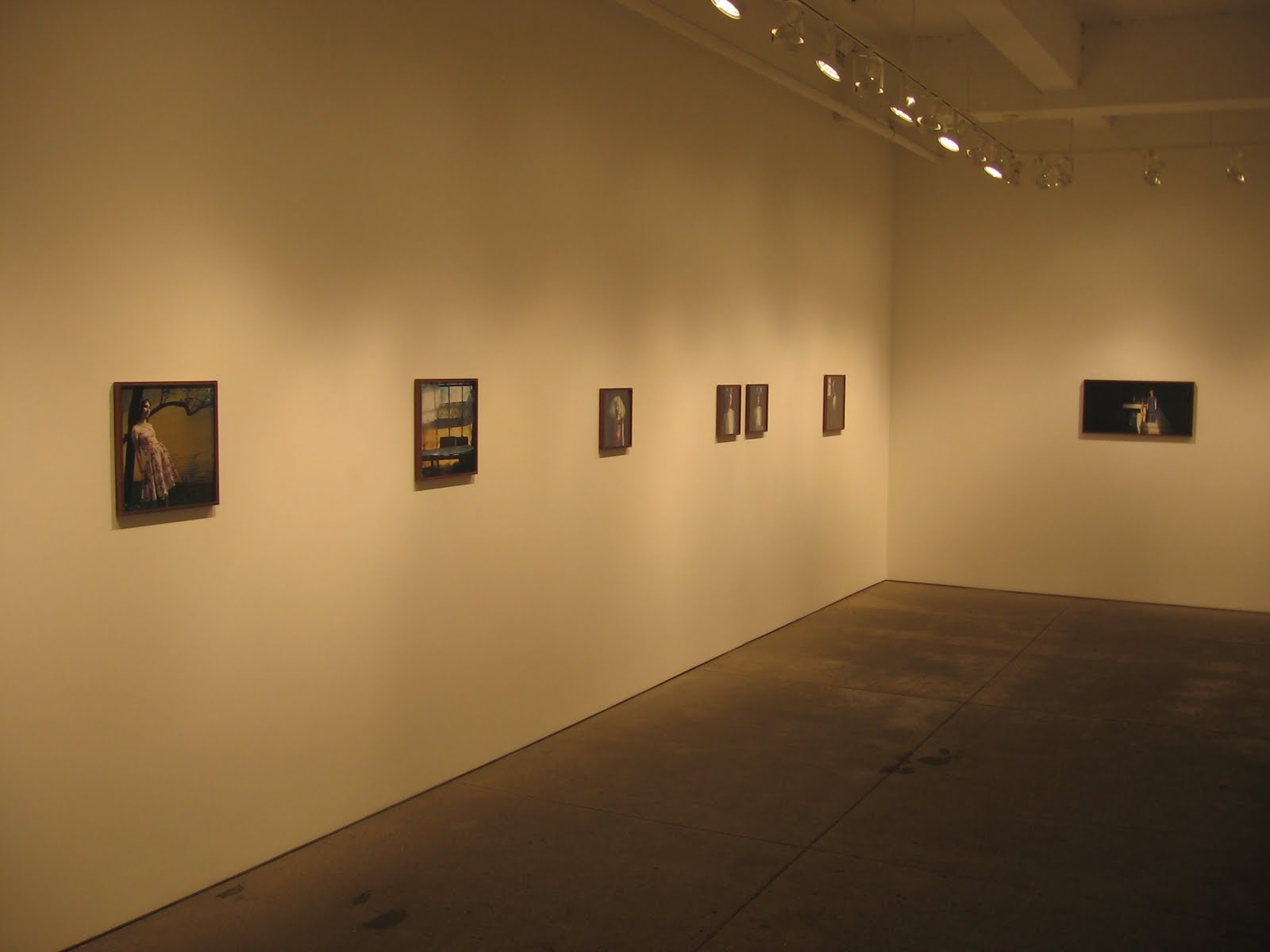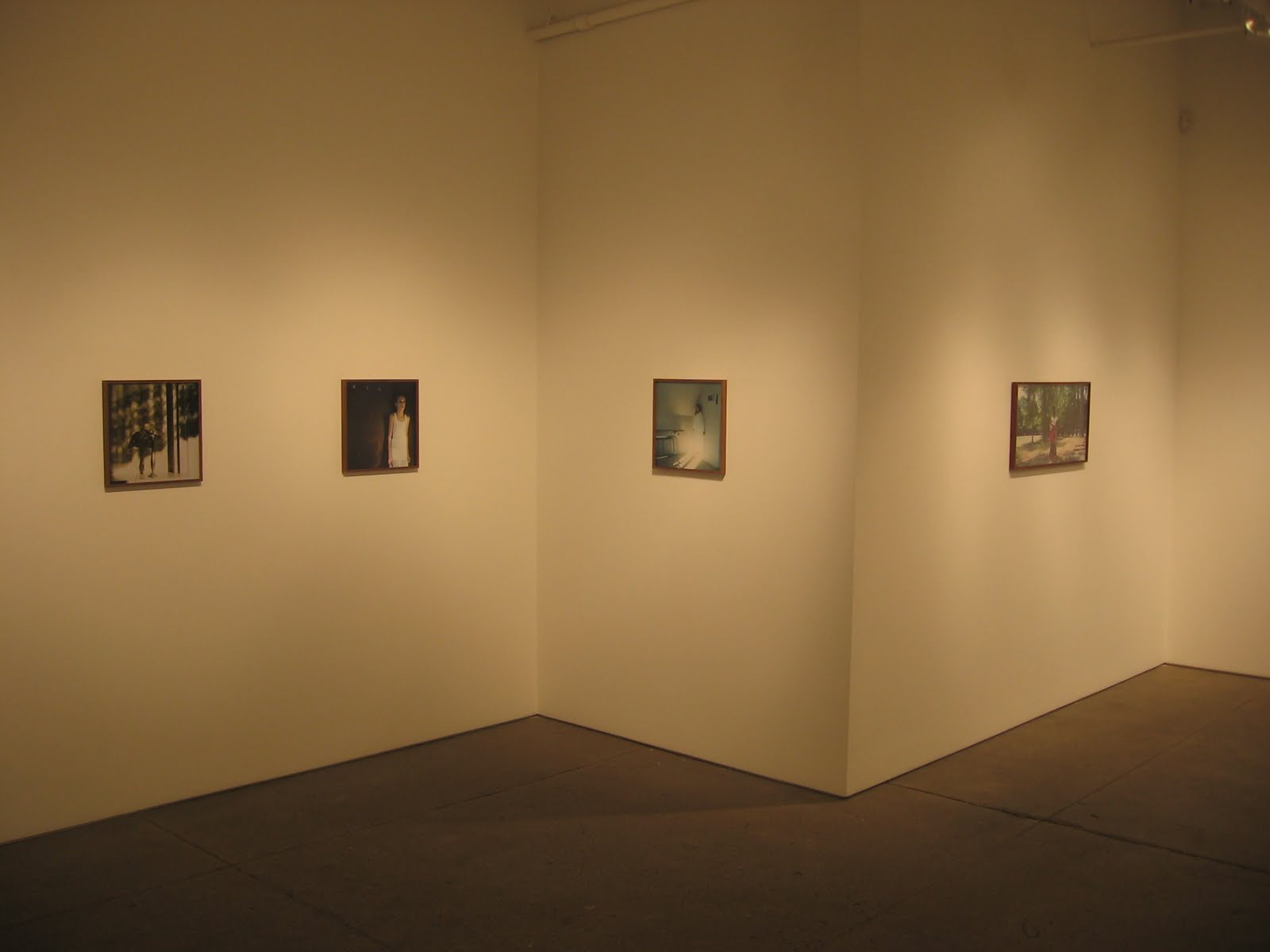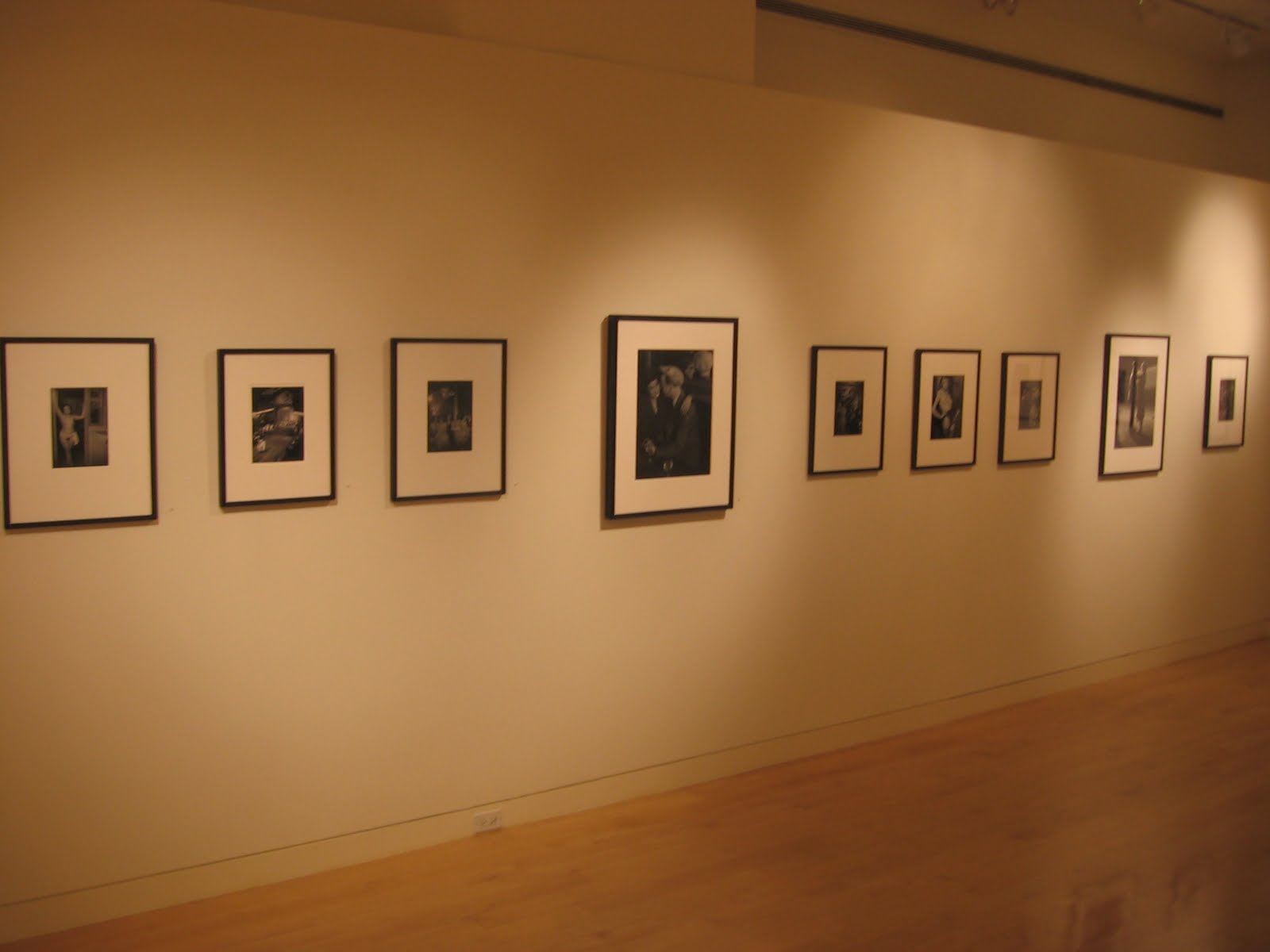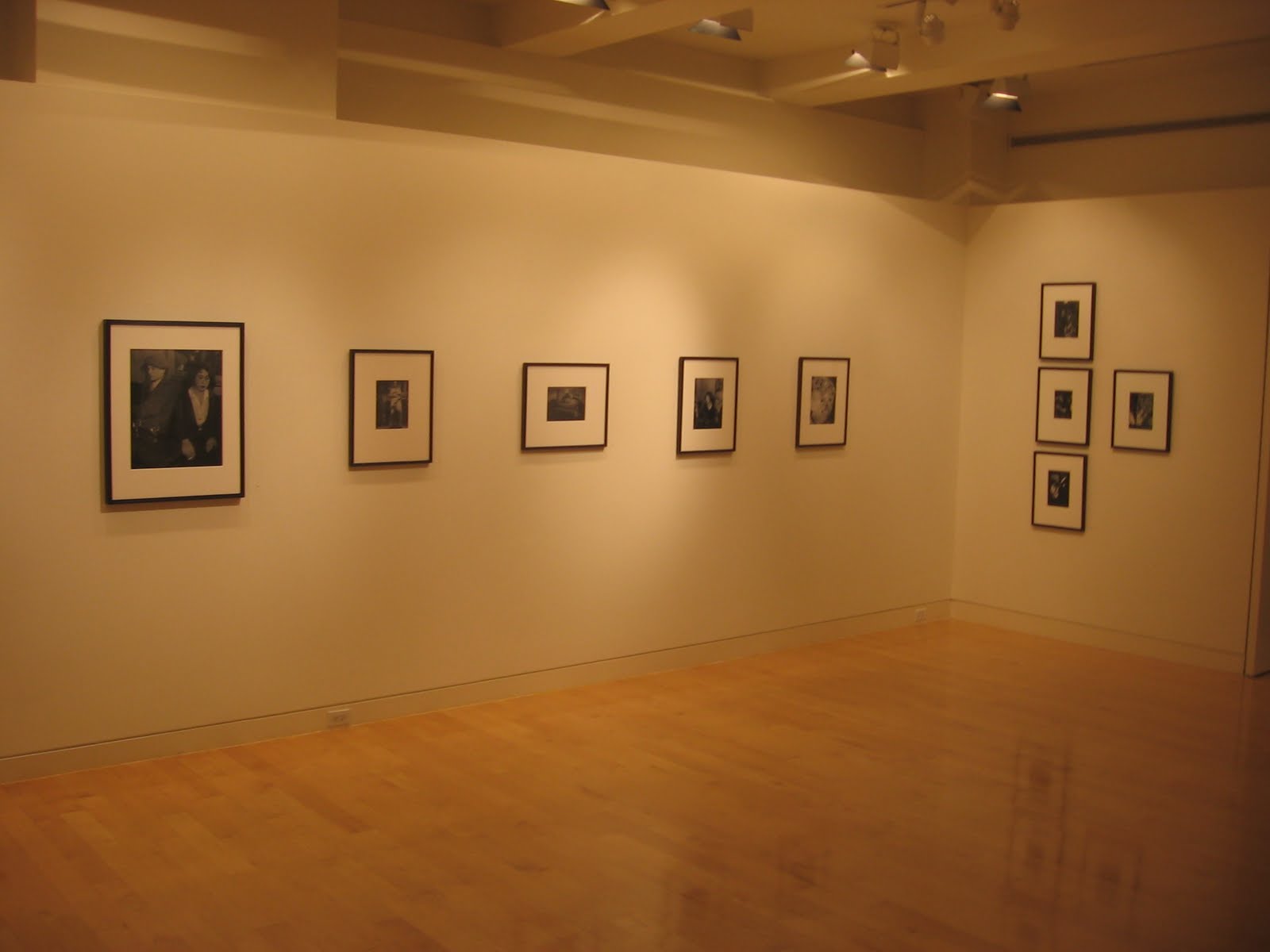 JTF (just the facts): A total of 167 black and white images, generally framed in black and matted, hung in the entry and the two main gallery spaces. A small glass case in the first room contains books, magazines, and documents. All of the prints are vintage prints from the archives of the National Geographic Society (here); most are gelatin silver. The negative dates range from 1890 to 1950. A book, National Geographic Image Collection, is also available (here). (Installation shots at right.)
JTF (just the facts): A total of 167 black and white images, generally framed in black and matted, hung in the entry and the two main gallery spaces. A small glass case in the first room contains books, magazines, and documents. All of the prints are vintage prints from the archives of the National Geographic Society (here); most are gelatin silver. The negative dates range from 1890 to 1950. A book, National Geographic Image Collection, is also available (here). (Installation shots at right.)
The following photographers are included in the exhibit (with the number of images on view in parentheses):
Clifton Adams (5)
Alexander Graham Bell Collection (5)
Hiram Bingham (6)
Pierre Daye Collection (9)
Captain Frank Hurley (6)
Willis Lee (7)
A. B. Lewis (10)
Charles Martin (1)
Herbert Ponting (20)
J. Baylor Roberts (7)
Joseph F. Rock (15)
Vittorio Sella (13)
George Shiras III (7)
B. Anthony Stewart (12)
Georges Tairraz (5)
Baron Wilhelm von Gloeden (22)
Volkmar Wentzel (1)
Maynard Owen Williams (10)
Edwin Wisherd (6)
Comments/Context: The big show of vintage prints from the National Geographic archive now on view in Steven Kasher’s new ground floor space has the feeling of a Natural History museum exhibit wrapped in the trappings of the Chelsea art world; documentary images from exotic cultures, heroic expeditions and far flung places are hung salon style in the cool environment of a white cube. Beyond the inherent curiosity generated by the subjects themselves, the photographs present a thought provoking and prickly set of questions: when (and how) does photojournalism somehow become art? Can (and should) images originally made for historical or anthropological purposes be recategorized as art based on their inherent aesthetic merits? As I walked around the galleries, I found myself asking these same questions over and over again as I looked at each grouping of images. Are these particular pictures worthy of “crossing over”? Or are they just amazing historical artifacts?
The surprising answer to my continual questioning was often yes, many of these prints can indeed be thought of in an art context without too much of a stretch of imagination. Of course, the history of photography is full of pictures that were originally made on assignment (whether photojournalism or commercial commissions) that have evolved into the category of art; the resonance of the images themselves and the passing to time have combined to move them beyond their original contexts into an altogether different realm.
I think that hung by themselves, most of these pictures would retain their National Geographic documentary patina, but placed in the context of a larger art/photography collection, many of the images could take on additional meanings or create interesting connections. While each viewer will see different associations given the diversity of imagery on display, here are a few relationships that I saw:
- For landscape and nature collectors, the early panoramas of the Swiss Alps and Peru, by Georges Tairraz and Hiram Bingham respectively, could be stunning complements to other mountain scenes.
- Herbert Ponting’s images of the discovery of the South Pole and other Antarctic adventures foreshadow the current wave of contemporary iceberg and global warming photography.
- The flash lit albino deer images of George Shiras III would be a nice pair with Caponigro’s famous Running White Deer.
- Willis Lee’s images of the stalagmites and stalactites of Carlsbad Caverns are a direct precursor to Ryan McGinley’s current body of work.
- Vittorio Sella’s botanical images from Uganda would fit into a collection of early flowers and plants (like ours).
- Alexander Graham Bell’s flight experiment photos would fit well with a selection of Berenice Abbott’s scientific images.
Overall, this exhibit is quite unlike the normal run of vintage and contemporary work to be found in the city’s art galleries and museums. It forces the visitor to consider the nature of the medium itself, and how certain images traverse different categories over time. While not all of the works on view can credibly make the jump to art status, those that do are a strong reminder that not all the images that move us come out of the art establishment, and great pictures, regardless of their origin or maker, are worthy of a place on our walls.
 Collector’s POV: The prints in the show are priced between $3000 and $8500. Herbert Ponting and Baron Wilhelm von Gloeden are the only two photographers in the show with relatively consistent action in the secondary markets: Ponting’s images have generally ranged between $1000 and $15000; von Gloeden’s from $1000 to $5000, with an outlier or two a bit higher.
Collector’s POV: The prints in the show are priced between $3000 and $8500. Herbert Ponting and Baron Wilhelm von Gloeden are the only two photographers in the show with relatively consistent action in the secondary markets: Ponting’s images have generally ranged between $1000 and $15000; von Gloeden’s from $1000 to $5000, with an outlier or two a bit higher.
Rating: * (one star) GOOD (rating system described here)
Transit Hub:
